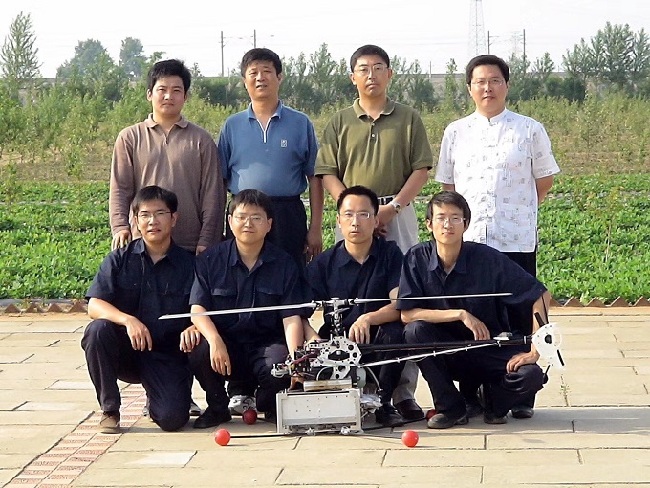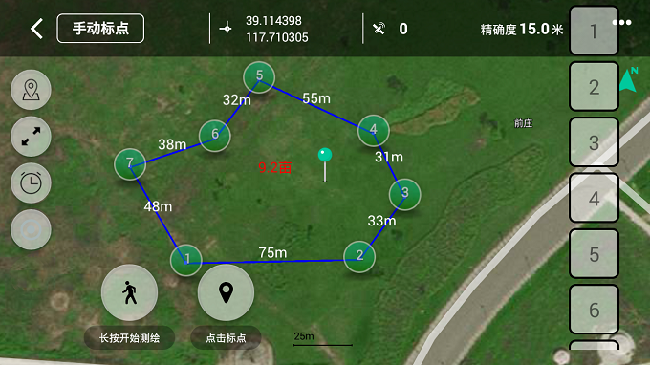Education
Tianjin University's team makes 'brains' and 'arms' for UAVs
Independently researched and developed by Tianjin University, a UAV (unmanned aerial vehicle) with high reliability and a stabilized flight control system provided an umbrella for more than 65,000 hectares of crops across China from Heilongjiang province in the North to Hainan province in the South over a recent agricultural work period, spraying 900 tons of agricultural chemicals onto the crops.
 |
A UAV inspects the electric power grids.[Photo provided to chinadaily.com.cn] |
Unlike in the relatively mature UAV industry in the United States, UAVs in China are either consumer-grade or commercial-grade. The former is mostly applied to aerial photography. Commercial-grade UAVs, using artificial intelligence control systems, can be applied more broadly in various industries.
Qi said that in comparison to the consumer-grade UAV flying amid the birds and clouds and adding to the beautiful scenery, "the commercial-grade UAVs usually work in areas filled with crops and densely-covered with high-voltage power lines." Such areas are not so appropriate for flying, according to Qi.
Commercial applications are usually used for tasks like electric transmission line inspections, or express delivery logistics. Though obstructed by different kinds of buildings or faced with various kinds of crossings, the UAVs have to finish their missions, which means not only do they need a cerebellum but also a brain.
 |
Qi Juntong (first on the left in the front line) and his team pose for a group photo. [Photo provided to chinadaily.com.cn] |
In addition to a brain, an intelligent UAV also has invisible arms. Qi's team integrated IoT (Internet of Things) cloud computing technology and automatic control technology to develop a “BASCloud” platform, the largest aerial unmanned operation total solution nationwide.
The platform not only provides large data services for manufacturers and teams using UAVs for crop protection, but also provides relevant supervision departments with points of reference. During the 2017 agricultural work period from April to August the platform received over 80 million valid data inputs, involving timing of crop-protection operations such as air-spraying, release of insecticides, and dispersion of the program’s money.
 |
| “BAS Farm” platform APP [Photo provided to chinadaily.com.cn] |
The intelligent UAV can also replace people in inspection work over long distances and in complex environments, such as above transmission lines, oil pipelines, mobile communication towers, and photovoltaic installations.
Traditional manual inspections require people to use a telescope to check the line. With the use of intelligent UAVs, inspection efficiency is about 6 to 10 times that of manual operations. If the UAV is equipped with an infrared thermometer, the work efficiency is increased a further four times.
"It also has higher stability and reliability, as well as a stable operation mode and processing," Qi said. At present, the intelligent UAV developed by the team has been carrying out electric power inspections in remote areas of southern China.
In recent years, Qi and his team have been focusing on development of unmanned helicopters. Through structural and electrical changes and the addition of flight control systems, UAV helicopters can assist or replace people in forest fire prevention, inspections, logistics transportation, disaster relief and so on.
 |
| A UAV sprays insecticides.[Photo provided to chinadaily.com.cn] |
Qi’s team took the lead in mastering internationally-advanced core technologies. The team can complete the transformation of helicopters ranging from 100 kilograms to 3 tons.
The team's independent research and development was cited as one of the ten most influential flying robotic research and application teams by the Journal of Field Robotics, an indication that Chinese UAV technology is starting to reach an internationally advanced level.
"Nowadays, our lives and working environments are being gradually changed by artificial intelligence. We benefit from this change, and we are happy to devote ourselves to it. Liberating people from complicated environments is also our desire,” Qi Juntong said.

Copyright 1995 - . All rights reserved. The content (including but not limited to text, photo, multimedia information, etc) published in this site belongs to China Daily Information Co (CDIC). Without written authorization from CDIC, such content shall not be republished or used in any form. Note: Browsers with 1024*768 or higher resolution are suggested for this site.
Registration Number: 130349









